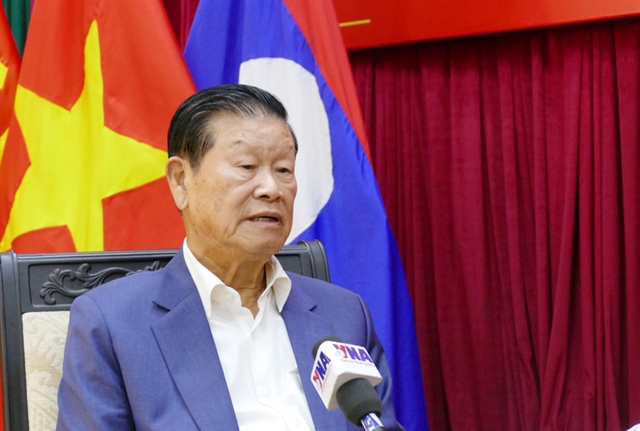 Opinion
Opinion


|
| A photo from the project on child sex abuse prevention and control of a soft skill centre for children in Hà Nội. Photo coutersy of Sine Academy X Da Mieu |
A photo essay showing images of pregnant children has caused controversy on social media.
The pictures, aimed to raise awareness of child sexual abuse, have been distributed by Shine Academy, a centre providing life skills for youngsters in Hà Nội.
Four girls aged between eight and 12 took part in the project with their parents’ consent. They played the role of victims of sexual child abuse, who became pregnant after they were raped.
In the photos, the girls appear sad and scared. The photos also feature haunting statements of abused girls as well as hard-hitting facts on child sexual abuse in Việt Nam.
The photo essay has gained support from many, who say the images should be shared to raise awareness in the community.
But others said they did not agree with the style of the photographs used.
Vũ Diệu Linh, a parent of a six-year-old girl in Hà Nội’s Hoàn Kiếm District, said she was shocked and compared the images with a poster for a hard hitting movie.
The images show the children holding their pregnant bellies with text accompanying them reading: ‘What's inside my tummy, Mum?’ and ‘He said it’s okay, but I feel pain’.
“The whole thing is just too much for me,” Linh said. “I feel like I was being intimidated and pushed into fear when I saw them.
“The images of little girls holding pregnant bellies were totally unnecessary and offensive.
“Pregnancy is one of the worst consequences of sexual assault, but sexual abuse is not all about pregnancy. It can cause many other hurtful consequences.”
Hà Đào, writer and photographer told Tuổi Trẻ (Youth) newspaper the images were unnecessarily dramatised.
She said not only girls were the target of sexual abuse, and the consequences of sexual abuse were not always the same – ending up with unwanted pregnancy.
Psychological trauma from being hugged or kissed violently seemed to be neglected, she added.
According to Hà Đào, the striking photos would leave a strong message for viewers and could help raise public awareness.
“They still have to live and they absolutely have the right to have self-respect,” she said.
“The assault is not and will not be the end of their lives.”
Many people took to the net to suggest the children’s faces should be blurred, even though their parents gave permission for them to be used.
Đoàn Ngọc Hiếu, a parent of an eight-year-old girl in Hà Nội’s Hai Bà Trưng District said the little girls should have their face blurred or darkened under such circumstances.
Many netizens agreed with Hiếu. The images of the girls, in which they were photoshopped wearing glasses and masks, have been shared.
Vũ Quốc Khánh, chairman of the Vietnam Association of Photographic Artists told Việt Nam News that it had never been easy to address complex and sensitive social issues such as child sexual abuse in photos.
He said that the use of little girls’ images, in which their faces were obvious – even for illustration purposes – was sensitive and risky. The images could be easily cropped or changed to serve other purposes. In this case, the models were not protected.
In addition, the photos, with their faces unblurred, could be stressful and painful feeling for viewers.
MC Công Tố, member of the project, said the group considered blurring the face of the little models but then changed their mind as they found that this way could make people misunderstand the girls were real victims.
Tố said the group and the girls’ families discussed very carefully the issues before the photographs were taken. The children were explained about their roles and took part in training courses about child sexual abuse before joining the project.
Tố said he hoped the project would be on the right track, and they would stop it if there were any negative impacts on the girls.
This should be a lesson for those who work on projects on social issues. There should be more practical action projects focusing on training people about the consequences of the crimes. More should be done to protect children, not threatening them. VNS




